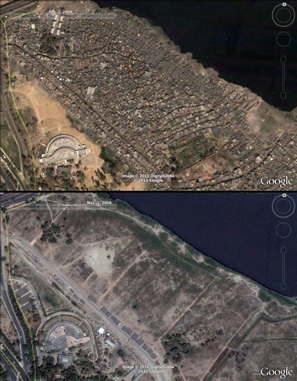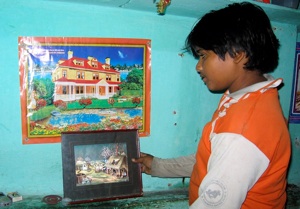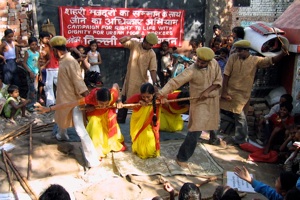Research
If “modern” cities are supposed to be built through techno-scientific procedures of urban planning and government—such as maps, censuses, and zoning—the conspicuous absence of such techniques in the world-class redevelopment of Delhi raises the question of how rule there is achieved. Based on a 24-month, multi-sited ethnography of the state, judiciary, and both informal ‘slum’ and elite residential settlements, I show how a world-class aesthetic—an idealised vision of a modern, privatised, and slum-free city assembled from transnationally circulating images of “global cities”—has replaced these techniques as the key instrumentality of rule in contemporary Delhi.
I am currently in the process of completing a book manuscript based on this research, tentatively titled ‘Rule by Aesthetics,’ which aims to theorise urban change, planning and the art of government from places quite literally 'off the map,' lending insight into the multiple modes of governing space in postcolonial and western contexts alike.



Building on my earlier work, I am currently preparing two new lines of research. In the first, I will study what I call ‘fractal geographies’ of government: novel ways in which governmental decisions take place, and technologies of power are deployed, outside of commonly understood bureaucratic, hierarchical chains. How does our conception of state power change when a local engineer, middleman, or court clerk has as much influence over governmental practice as a state planner or elected leader? What new metaphors might we use to describe contexts in which the locus of governmental power is mobile rather than fixed, and where nodes of power can be substituted for each other?
A second research strand addresses the role of diverse aesthetic practices as technologies of government. Over the past 15 years, photographs have played an increasingly central role in adjudicating land-use cases in the Indian courts. In particular, petitioners against slums have experienced considerable success when including images of slum ‘unsightliness.’ What are the implications of the evidentiary authority the Indian judiciary now accords to photography? How does photography’s power to extend the gaze of the courts outwards without requiring (and often replacing) detailed, scientific surveys of land use or property ownership challenge our understanding of the epistemology of rule? To address these questions, my new research will examine the changing role of photography in Indian jurisprudence since Independence.
I am also interested in studying how the diverse ways in which the urban poor imagine their political selves produce citizenship demands beyond the formal domains of law, policy and property. Evidence here will come from street theatre and protest, the study of how slum residents ascribe meaning to their decorative art, and, more generally, an examination of how private property is represented and discussed in the lives of the urban poor.

Top images: Slum demolitions in west Delhi, 2007
Bottom image: Yamuna Pushta settlement, before & after its demolition in 2004

Ongoing...

Asher Ghertner © 2011
